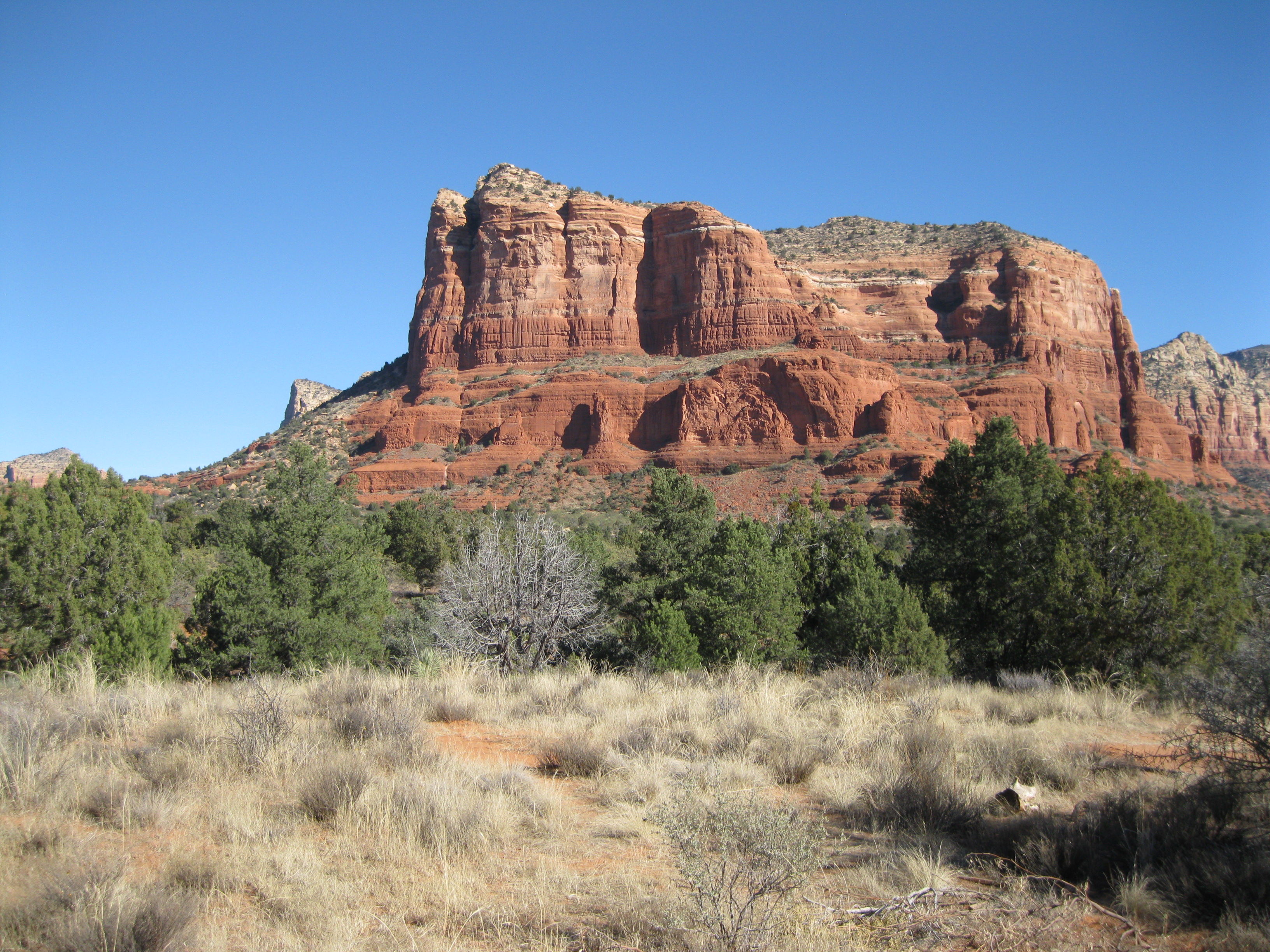Breathtaking Red Rock Scenery
If you’re drawn to sweeping arid landscapes, the buttes and canyons of Arizona’s Sonoran Desert offer a breathtaking setting to explore
Coconino National Forest, located right by the wonderful city of Sedona, Arizona, is a place that amazed me with its beauty. It’s famous for its jaw-dropping rock formations, and I can certainly say, they are mesmerising. Getting there is a breeze, whether you’re already in Sedona or if you’re coming in from Phoenix and decide to join a day tour. Either way, it’s totally worth the trip.
A Red-Rock Paradise Carved by Time and Nature
Sedona is like a hidden gem located at the base of the majestic Mogollon Rim, which stretches about 320 kilometres (200 miles) across Arizona, running east to west like the backbone of the state. It’s a place where the land has been slowly shaped over time, eroded by the forces of nature into the beautiful canyons and buttes you see today. When I first saw them, I was stunned by how the layers of rock, worn by time and water, had created such a astonishing landscape.
The rocks here are famous for their vibrant red hue, thanks to iron oxide, and yes, that’s basically rust! It’s incredible to think that something as simple as iron can create a scene so striking. As for the steepness of the terrain, well, that’s the result of tougher top layers of rock, like basalt and limestone, that are way more resistant to erosion. The softer rocks below gave way over time, leaving behind those breathtaking, sheer cliffs that seem to rise up from nowhere.
What blows my mind is that the geology of Coconino National Forest, is connected to some of the most famous landscapes in the United States, places like the Grand Canyon, Zion, Bryce Canyon, Arches, and Monument Valley. It’s like stepping into the same geological family, and I can’t help but feel like a part of something bigger and older in ancient natural history when I’m out there, surrounded by all this beauty. It’s humbling and awe-inspiring all at once.
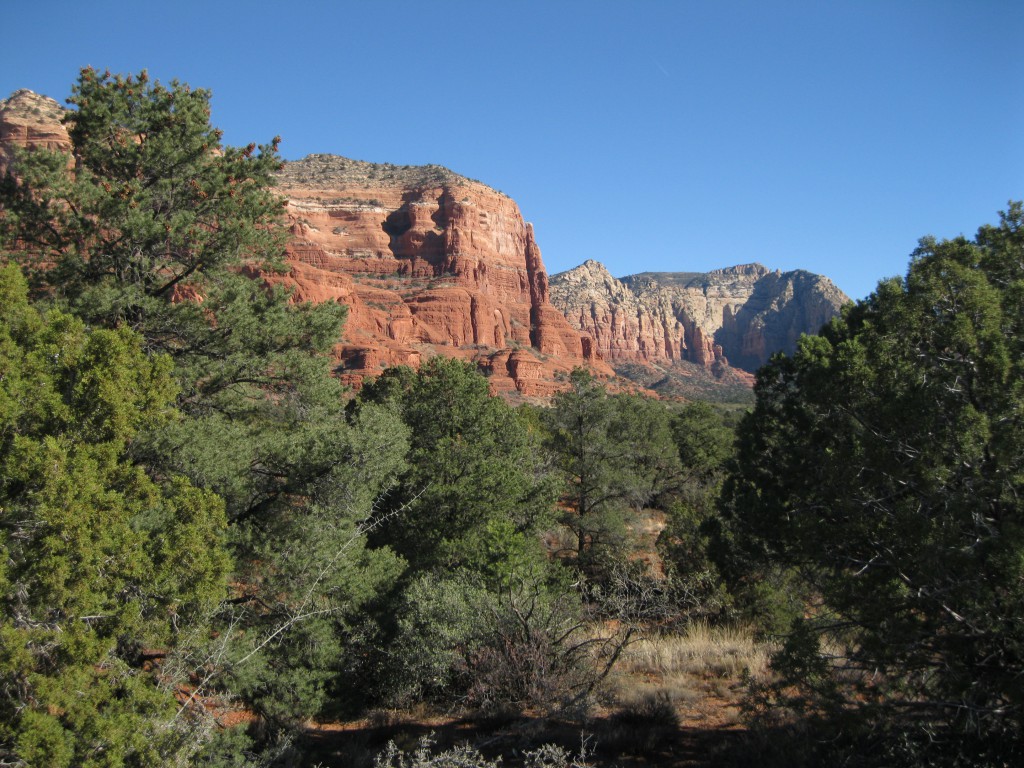
Chapel of the Holy Cross: Where Stunning Views Meet Timeless Architecture in Sedona
If you’re looking for a spot to soak in Sedona’s incredible views, the Chapel of the Holy Cross is a must-see. Perched high up on one of Sedona’s stunning red rock buttes, it’s not just a chapel—it’s an architectural masterpiece. Located at 780 Chapel Road, the chapel feels like it’s almost part of the landscape itself. The design was the brainchild of architect Richard Hein and was commissioned by Marguerite Brunswig Staude, a local rancher and sculptor. She originally dreamed of building it in Budapest, Hungary, but with the outbreak of World War II, she chose to bring her vision to life right here in her native Arizona.
Built in 1956 with the help of then-Senator Barry Goldwater securing a special permit, the chapel is a testament to the beauty of blending nature with design. As you step inside, the view is absolutely breathtaking—Sedona sprawls beneath you, and you can see the surrounding landscape in all its glory. The chapel also has a gift shop where you can grab a little something to remember your visit.
Oh, and if you’re curious, there’s also a stunning view of the most expensive house in Sedona from here, valued at around $29 million. It’s located at 503 Chapel Drive, and the owner is Dr. Loan Cosmescu, the inventor of LASIK eye surgery. Construction of the house began in 2003 and finished in 2008, and trust me, it’s hard to miss from up here.
For me, visiting the chapel was more than just admiring the architecture—it felt like standing in a place where history, nature, and human ingenuity came together to create something truly unforgettable.
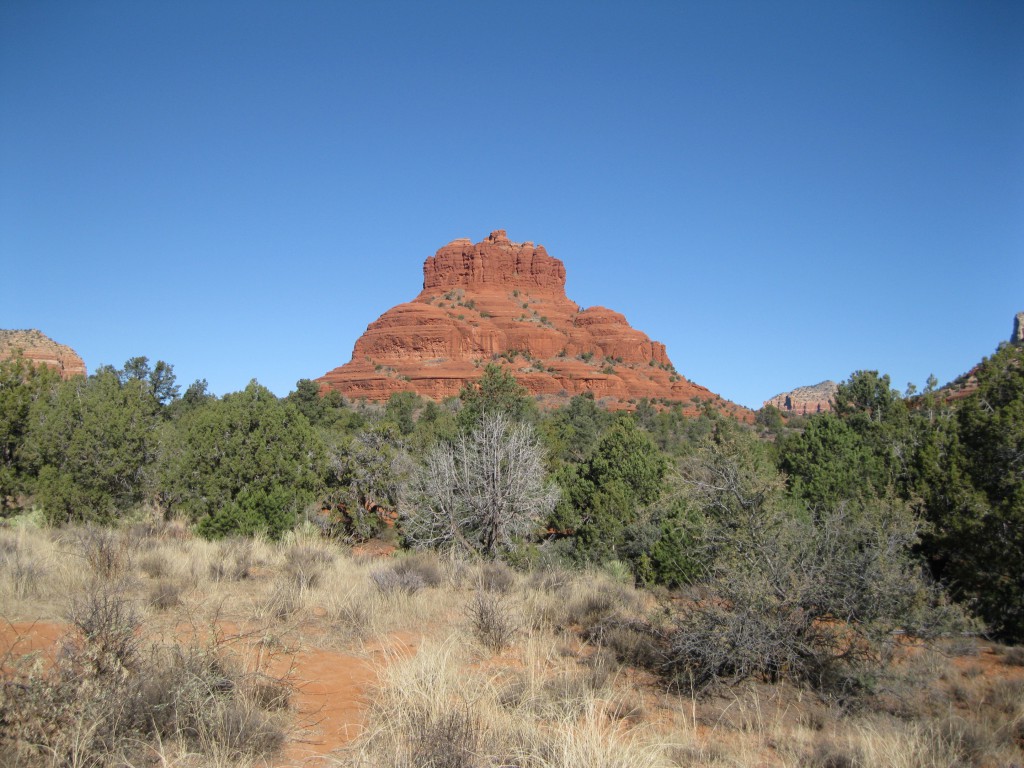
Sedona: A Charming Getaway with Art, Adventure, and Stunning Trails
Sedona definitely has that touristy vibe, but it’s still a charmining, lovely and clean little town that you can’t help liking. There’s always something to do, whether you’re in the mood to wander through art galleries, check out some great restaurants or grab a drink at one of the local bars. And if you’re into shopping, you’re in luck because there’s no shortage of shops to explore.
If you’re someone who loves the outdoors, Sedona won’t disappoint. There are over 482 kilometers (300 miles) of trails for hiking, biking and equestrian trails that weave through the stunning Coconino National Forest. Just keep in mind though, as it’s a national forest, not a national park, so camping isn’t allowed. If you’re planning to stay for a few days to fully soak in the natural beauty, the best bet is to find a cosy spot to stay in Sedona itself. That way, you can enjoy the town’s charm and still be close to all those amazing trails!
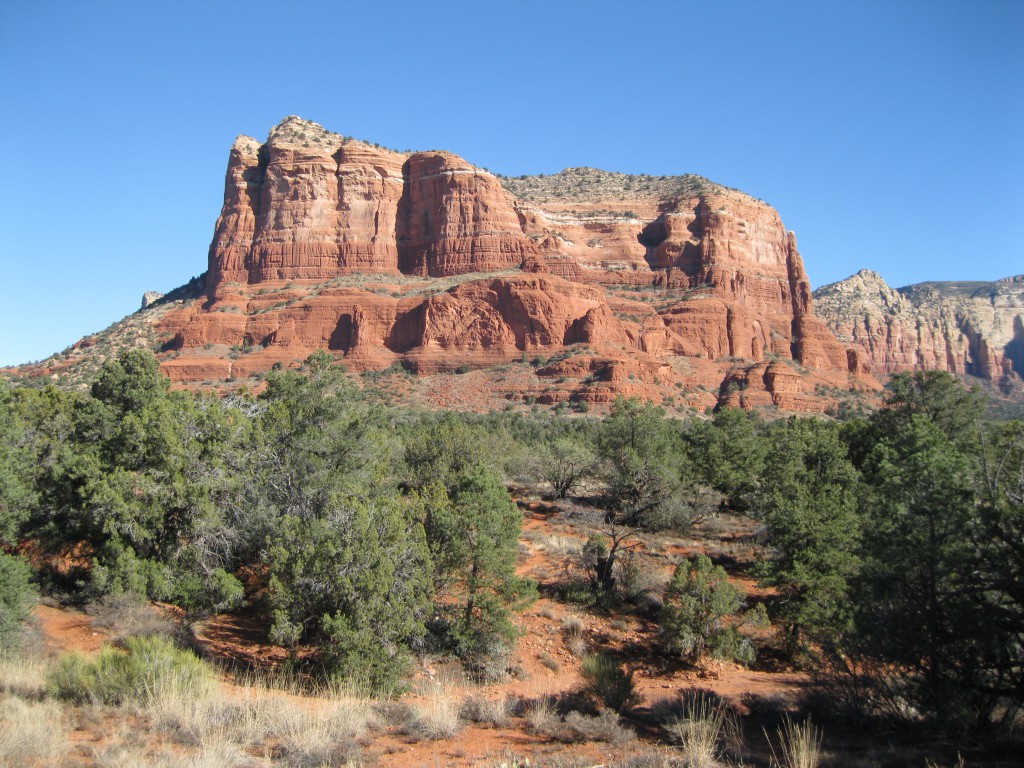
Coconino National Forest: A Forest in Name, a Desert in Disguise
Coconino National Forest may bare the name “forest”, but that is not the first thing that comes to mind when approaching from Sedona. Perhaps that’s why most people refer to the area simply as Sedona. Instead of leafy canopies, dense greenery, or flowing rivers, you’re welcomed by a striking expanse of arid desert beauty, dotted with sparse vegetation and dominated by vast, fiery red rock formations that steal the show and leave you in awe. However, if you enter the forest from Flagstaff, you’ll find yourself in a very different landscape, one that lives up to the “forest” name, with lush woods.
Echoes of the Ancients: Discovering the Sinagua Legacy in Sedona’s Red Rock Country
While you’re exploring, you’ll also find well-preserved Native American sites throughout in close proximity to Sedona, offering a fascinating glimpse into the history of the ancient Sinagua people who lived here from around 1,400 to 1,100 BC. Known for their impressive pottery, basketry, and masonry, these early inhabitants left behind rock art, pueblos, and cliff dwellings. One of the most remarkable sites is Montezuma Castle, about 40 km (25 miles) from Sedona.
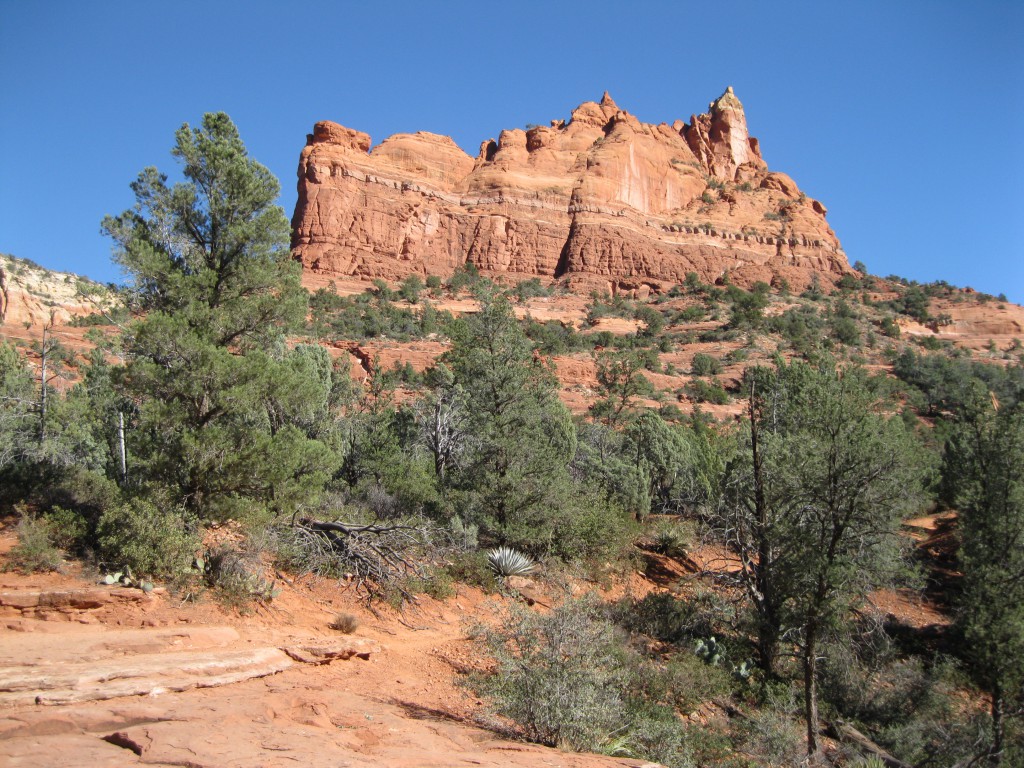
Wander Where the Red Rocks Rise: Through the Heart of Coconino National Forest
Exploring Coconino National Forest is an experience you won’t forget. Some of the most staggering formations here are Bell Rock and Courthouse Butte, both located just south of Sedona. These phenomenal red rock giants, made up of horizontally bedded sedimentary rocks, have been shaped by time and nature and are nothing short of awe-inspiring.
There is a hiking trail called the Bell Rock Pathway, a 5.8 km (3.6-mile) route that acts as a central corridor leading to several other loops and spur trails. Along the way, you’ll get unbeatable views of Bell Rock, Courthouse Butte, and even the Chapel of the Holy Cross in the distance. Be sure to stop by the Bell Rock Vista parking lot for some amazing photo opportunities too!
Even though the Red Rock Country looks rugged and wild, it’s actually a very fragile desert ecosystem. Plants grow slowly here, and with so many people visiting—around 4 million each year, the same as the Grand Canyon National Park—human footprints leave a lasting impact. So, as you explore, keep in mind that we all have a role in preserving this incredible landscape for future generations to enjoy.
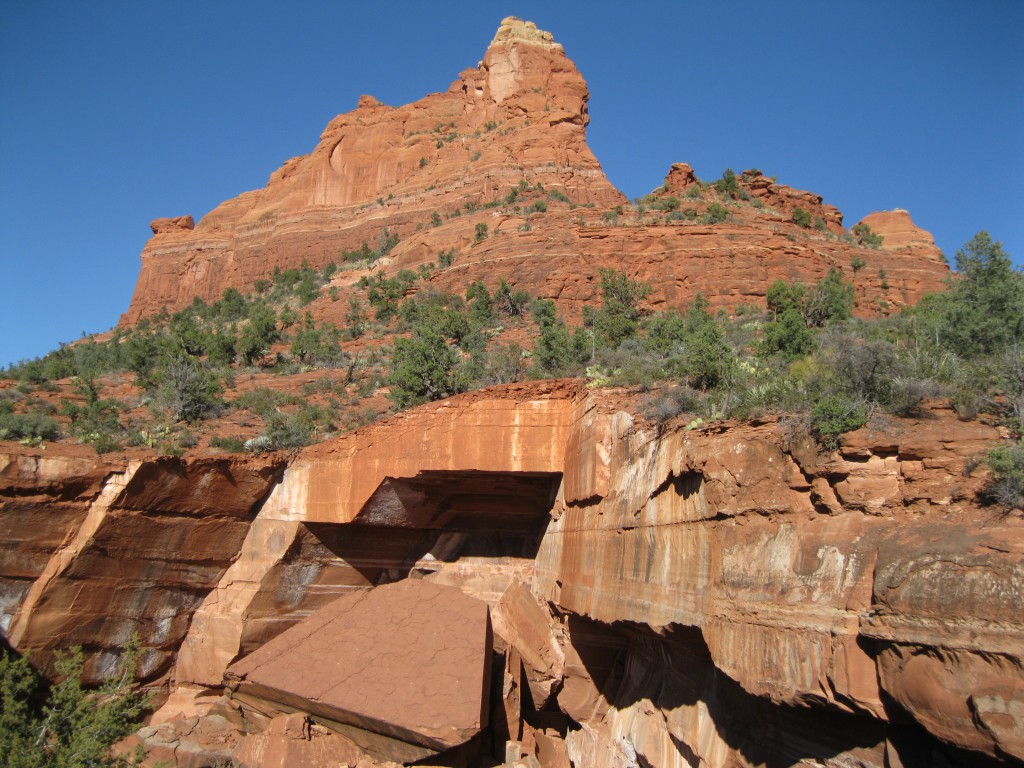
Where the Desert Tells Its Stories: A Jeep Journey Through Coconino – The Soldier’s Pass Trail
If you’re up for a little more adventure, I highly recommend taking a jeep tour with one of the local operators. It’s an incredible way to see the area from a different perspective. One of the coolest trails is the Soldier’s Pass trail, which offers amazing views of formations like Castle Rock and Coffee Pot Rock. This historic trail was once travelled by General Crook in 1871, and it’s still as captivating today.
The jeep tour takes you up dirt roads and onto some of the major rock plateaus. One of the first stops is Apache’s Seven Pools, where you’ll be treated to sensational views. Another stop is the Devil’s Kitchen sinkhole, which is a sight to behold. It might look like a small hole in the ground, but it’s actually 256 metres (840 feet) deep! The rock walls are steep and straight, so make sure to stay at least a body’s length away from the edge. The sinkhole was formed by the collapse of underground caverns and will continue to grow, so it’s important to follow all safety precautions while you’re there.
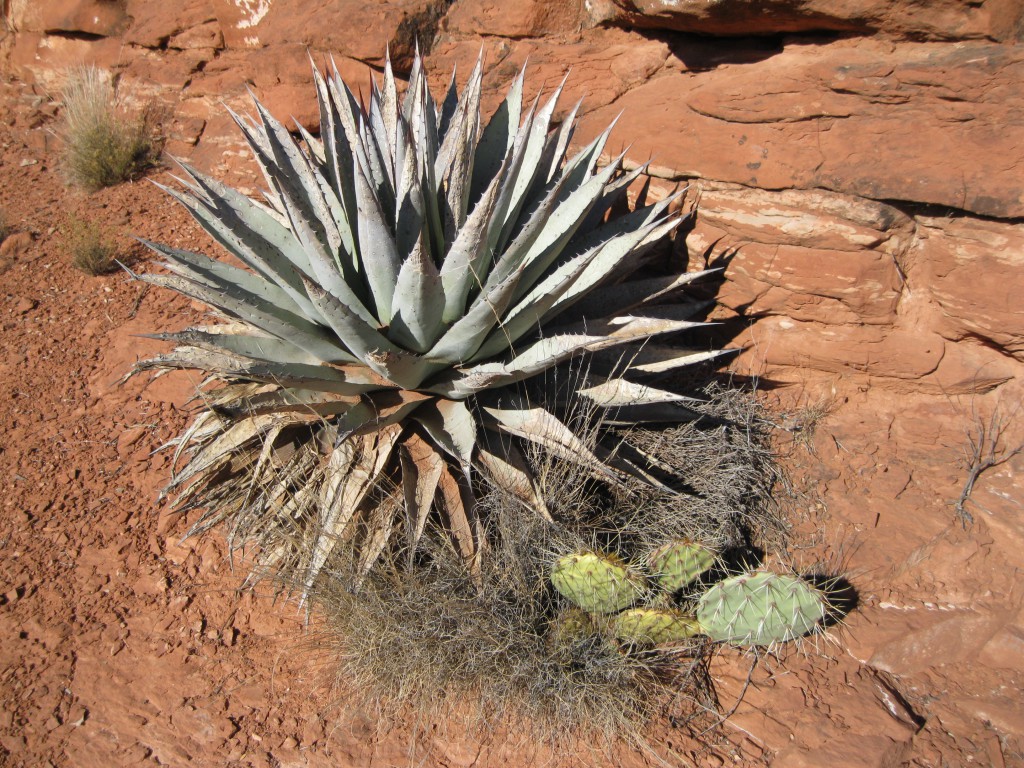
Right next to the sinkhole is Schnebly Hill, which offers some of the best panoramic vistas in the area. From here, you can see Coffee Pot Rock and Castle Rock in all their glory. Along the way, you’ll also notice the prickly pear cacti, which are said to have inspired Walt Disney’s Mickey Mouse! If you use a bit of imagination, you can spot Mickey’s head and ears on the cactus pads. And fun fact: prickly pear cactus is actually edible! It’s prepared much like squash and is apparently good eating.
As you explore, you’ll also pass by agave plants and juniper trees, which are so emblematic of the desert landscape here. While some residential buildings are near the park, they were built before the area was protected, and Sedona is still just a short 5-minute drive away when you’re ready to leave the Coconino and head back into town.
Coconino National Forest is a place where adventure, history, and natural beauty come together in the most unforgettable way. A magnificent place that will rock your world.
